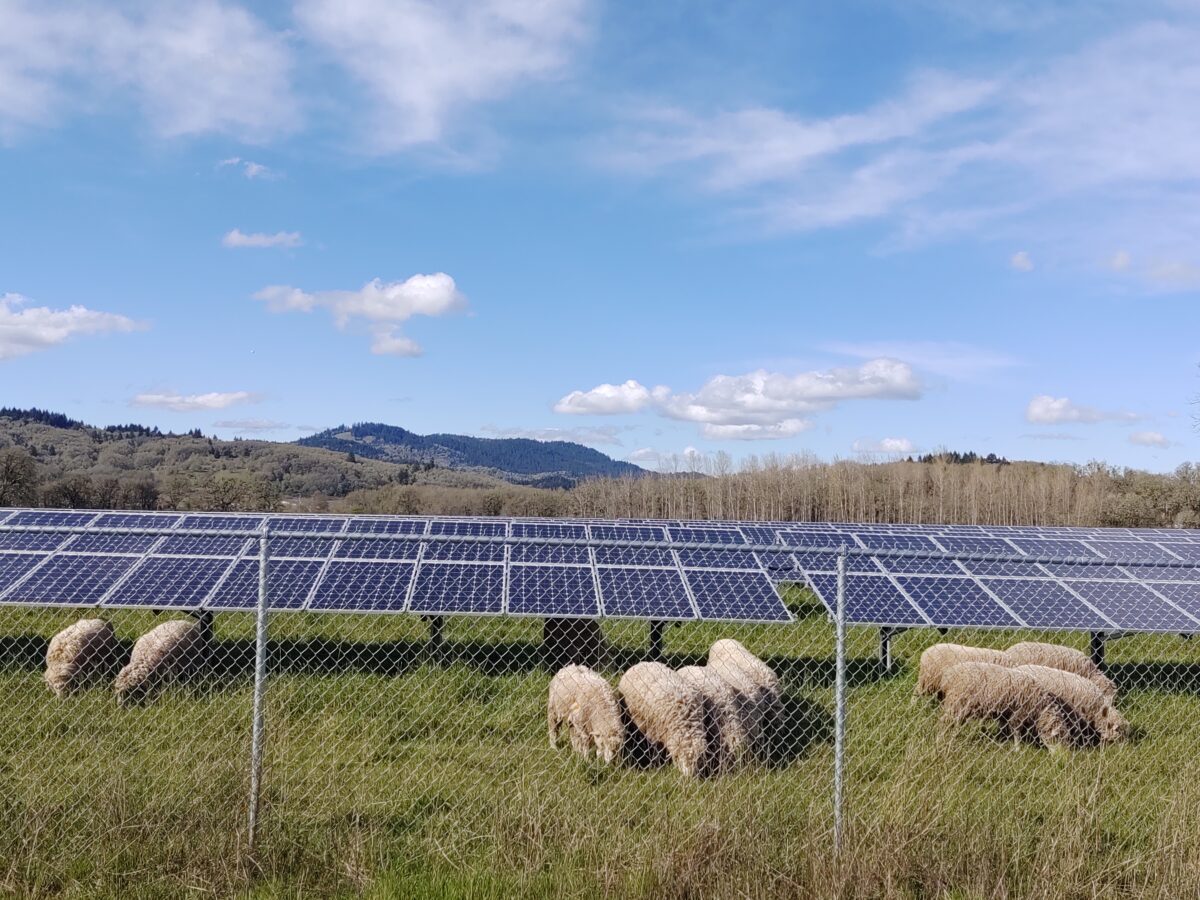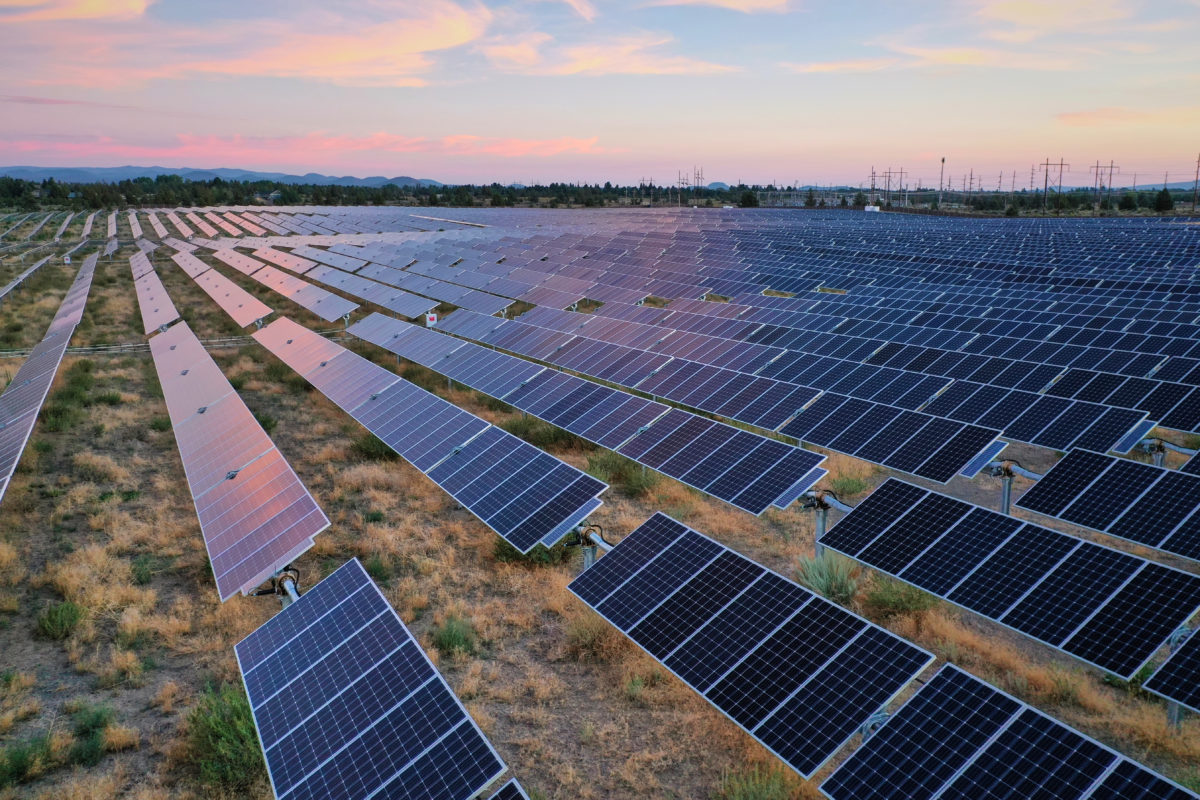Oregon’s largest city, Portland, carries the historic nickname of Bridge City. A state with more than 7,000 bridges, including more than 50 picturesque covered bridges, it’s hard to not imagine rivers, timber and snow-capped mountain peaks just outside of its cities.
As such, hydropower from its riverways represented more than 51% of the Beaver State’s power mix last year. Wind power followed behind with 14% of the state’s power mix, which is more than 70% renewable energy, according to the Energy Information Administration.
In 2022 Oregon’s solar market grew from under 100 MW of installed capacity per year to a respectable 1.4 GW, with more than 176 MW deployed in 2022. The state ranks 21st in the U.S. for solar generation and will move up to 19th place in five years, based on a strong 2.5 GW backlog of projects, according to the Solar Energy Industries Association.
Incentives
With about 15 rural electric cooperatives and two investor-owned utilities, Portland General Electric (PGE) and PacifiCorp, the state’s utility regulator allows residents to generate up to 25 kW of residential and 2 MW of commercial and industrial solar.
For PGE and PacifiCorp customers, net excess generation (NEG) is carried over to the customer’s next bill as a kilowatt-hour credit for a 12-month period. The annual billing cycle concludes at the end of the March billing cycle each year. Any excess generation credits remaining at the end of a 12-month period is credited at the utility’s avoided-cost rate to customers enrolled in Oregon’s low-income assistance programs.
Customers outside of the northern and southernmost utility’s cities can see excess generation purchased at the rural electric cooperative’s avoided-cost rate or credited to the customer’s next monthly bill as a kWh credit. At the end of the year, remaining credits are enrolled in a low-income assistance program, credited to the customer outright or to other local use, according to DSIRE’s database.
Thanks to the Inflation Reduction Act of 2022, Oregon residents and all U.S. residents alike are offered the Federal Investment Tax Credit (ITC). The credit applies to 30% of the installed system cost and can be rolled over if you do not have a large enough tax appetite in year one.
Community solar
Enacted in July 2022, the Oregon Public Utility Commission under legislation UM 1930 allows for utility customer subscription to three of the state’s utility-assembled community solar projects located in PGE, PacifiCorp or Idaho Power service territory.
According to the state’s community solar database, about 60 community projects ranging from 300 kW to 5.6 MW are available or under development across the state, with projects in PGE and PacifiCorp territories allowing for up to 40% of residents in low-income communities to participate.
Agrivoltaics
While its community solar program might not provide full accessibility to all ratepayers, Oregon has seen a blossoming agrivoltaics market crop up in recent years. Agrivoltaics, or the shared land use of solar energy generation and agriculture applications, has put Oregon State University’s agrivoltaics program on the map for progressive farming and energy land use.
Located in Aurora, Ore., Oregon State University in October 2022 began construction of the five-acre Solar Harvest project at the school’s North Willamette Research and Extension Center, 20 miles south of Portland. The ground-mounted solar photovoltaic project is projected to generate 326 kW upon completion and at $1.5 million capital cost, is the result of a partnership between Oregon State and the Oregon Clean Power Cooperative, which developed the solar system. Additional financing came from a grant from utility PGE’s Renewable Development Fund, and nonprofit Roundhouse Foundation, a climate-focused impact fund based in the Sisters, Ore.

Image: Oregon State University
The Solar Harvest project is designed for agrivoltaics research, with panels that are more spread out than traditional project and able to rotate to a near vertical position to allow farm equipment to easily pass through.
Maggie Graham, facility research assistant at OSU’s College of Agricultural Sciences, tells pv magazine USA in May 2023 that Solar Harvest project was 98% complete in recent weeks. “We have an assortment of interdisciplinary research projects going on this spring including vegetables, forages, nursery stock, (and) potted trees” at the agrivoltaics research site, Graham said.
The OSU agrivoltaics program is also engaged with fourth-generation family farmer Jack Southworth to test cattle grazing agrivoltaics use cases on the beef cattle farmer’s 12,700 acre farm in Bear Valley, Ore., which is seeing a 1.5 MW solar system deployment on an eight-acre tract on the farm that dates back to 1885.
Notable project
Avangrid, a power development company owned by the Iberdrola Group, in April announced the commercial operations of the Pachwáywit Fields solar farm in Gilliam County, Ore., becoming the largest operating solar farm in Oregon at 205 MW(DC) power capacity.
Pronounced Patch-Why-Wit, meaning “sun” in the Sahaptin language of the Columbia River, Oregon-based Native American tribe, the project is located on ceded lands of the Confederated Tribes of the Warm Springs.
Avangrid spokeswoman Mariel Huerta Meza told pv magazine USA the project location was determined based on interconnection, transmission and offtake interest, solar resource, willing landowners, permitting, and constructability. For many years, Avangrid has brought clean energy jobs to Oregon communities near the Boardman power plant, a retiring coal generating facility. The Pachwáywit Fields location is also adjacent to operating Avangrid wind facilities, providing easier interconnectivity with existing infrastructure, she added.
Up next
Last time, the pv magazine USA tour of state solar incentives reviewed Washington, and next up, we will head to sunny California. For the full list to date, click here.
This content is protected by copyright and may not be reused. If you want to cooperate with us and would like to reuse some of our content, please contact: editors@pv-magazine.com.









By submitting this form you agree to pv magazine using your data for the purposes of publishing your comment.
Your personal data will only be disclosed or otherwise transmitted to third parties for the purposes of spam filtering or if this is necessary for technical maintenance of the website. Any other transfer to third parties will not take place unless this is justified on the basis of applicable data protection regulations or if pv magazine is legally obliged to do so.
You may revoke this consent at any time with effect for the future, in which case your personal data will be deleted immediately. Otherwise, your data will be deleted if pv magazine has processed your request or the purpose of data storage is fulfilled.
Further information on data privacy can be found in our Data Protection Policy.